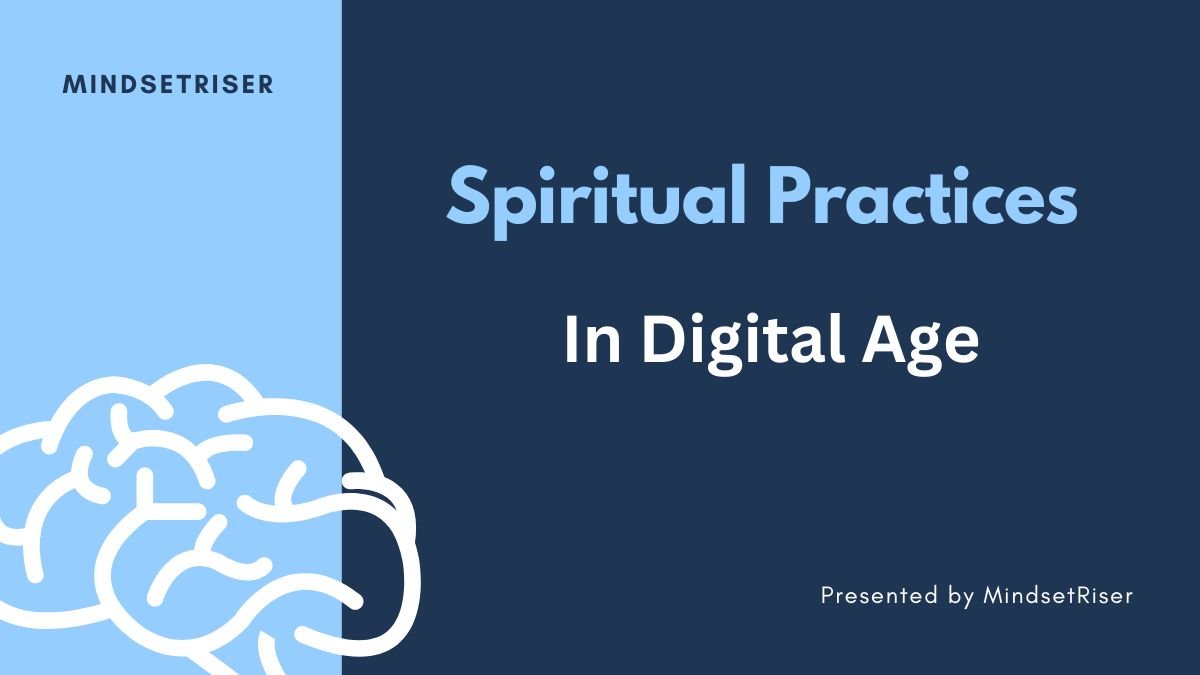Spiritual Practices in the Digital Age: Navigating Technology and the Search for Meaning
In the modern world, technology is an inseparable part of daily life, transforming how we work, communicate, and live. While the digital age offers numerous conveniences, it also presents unique challenges to spiritual well-being. With constant connectivity, information overload, and the pressures of modern living, many individuals are seeking ways to integrate spiritual practices into their daily routines. In this article, we explore how spiritual practices can be adapted and embraced in the digital age, helping individuals navigate technology and find deeper meaning in life.
1. The Challenges of the Digital Age: Technology and the Quest for Meaning
The rise of smartphones, social media, and the 24/7 news cycle has dramatically altered our lives. While technology provides numerous benefits, it also presents challenges, particularly when it comes to maintaining a sense of inner peace, focus, and spiritual connection.
- Key Idea: In the digital age, many individuals experience feelings of overwhelm, distraction, and a lack of connection to their deeper selves. Constant exposure to digital stimuli often prevents moments of introspection and quiet reflection, which are essential for spiritual growth.
- Practical Application: To combat digital distractions, it is important to establish boundaries with technology. Setting specific times for checking emails, social media, or news can help reduce stress and create space for spiritual practices. Additionally, turning off notifications or using apps that limit screen time can help create a more intentional, mindful relationship with technology.
Reflection: While technology is an integral part of our lives, it’s essential to find balance by intentionally carving out time for spiritual practices that foster mindfulness and inner peace.
2. Mindfulness and Meditation: Digital Tools for Inner Peace
Mindfulness and meditation have gained immense popularity in the digital age, largely due to the availability of mobile apps and online resources. These practices, rooted in ancient spiritual traditions, offer powerful tools for cultivating presence, reducing stress, and enhancing overall well-being.
- Key Idea: Technology can be used as a tool to support mindfulness and meditation practices. Many apps offer guided meditations, breathing exercises, and mindfulness reminders to help individuals stay grounded in the present moment, even amidst the distractions of daily life.
- Practical Application: Apps such as Headspace, Calm, and Insight Timer offer accessible resources for practicing meditation and mindfulness on-the-go. These digital tools can be especially helpful for beginners, offering structured guidance in a busy world. By setting aside a few minutes each day to engage with these tools, individuals can cultivate a deeper sense of awareness and spiritual connection.
Reflection: While technology can contribute to distractions, it can also be harnessed to support spiritual practices like meditation. Digital tools can help individuals incorporate mindfulness into their daily routines and create moments of peace amidst chaos.
3. Digital Detox: Reclaiming Time for Spiritual Growth
In the fast-paced, technology-driven world, taking time away from screens is essential for mental and spiritual well-being. A “digital detox” refers to intentionally disconnecting from electronic devices for a set period to focus on personal reflection, self-care, and spiritual practices.
- Key Idea: A digital detox offers an opportunity to disconnect from external distractions and reconnect with one’s inner self. By spending time away from social media, email, and other digital obligations, individuals can create space for contemplation, prayer, and meaningful spiritual practices.
- Practical Application: Plan regular “digital detox” periods—whether it’s a full day, weekend, or even just an hour each day. During this time, engage in activities like reading sacred texts, journaling, or practicing gratitude. This time away from technology can help individuals restore their sense of balance and reconnect with what truly matters.
Reflection: Disconnecting from technology can be a powerful spiritual practice. By creating intentional breaks from the digital world, individuals can deepen their spiritual practice and cultivate a sense of peace and clarity.
4. Online Communities: Connecting with Like-minded Souls
One of the greatest gifts of the digital age is the ability to connect with people from all over the world. Online communities centered around spiritual practices, personal growth, and well-being provide valuable opportunities for connection, support, and shared learning.
- Key Idea: Technology can facilitate meaningful connections with others who share similar spiritual values. Online groups, forums, and social media platforms dedicated to spirituality can offer a sense of belonging and a space to exchange insights, experiences, and support.
- Practical Application: Seek out online communities or forums focused on the spiritual practices that resonate with you. Whether it’s a meditation group on Facebook, a virtual book club for spiritual texts, or an online yoga class, these digital spaces can provide a sense of fellowship and collective growth. Use these platforms mindfully, focusing on connections that support your personal and spiritual development.
Reflection: The internet offers opportunities to build meaningful connections with like-minded individuals. Online communities can foster spiritual growth, provide support, and help individuals feel less isolated in their spiritual journeys.
5. Digital Spirituality: Integrating Sacred Practices with Technology
Digital spirituality refers to the use of technology to enhance spiritual practices, whether through online courses, virtual retreats, or digital versions of sacred texts. While some may view technology as antithetical to spirituality, digital tools can enhance and deepen spiritual experiences when used intentionally.
- Key Idea: Spiritual practices can be integrated with technology in a way that enhances the experience. From online meditation courses to virtual worship services, digital platforms provide unique ways to engage with spirituality, especially for those who may not have access to in-person communities or resources.
- Practical Application: Explore online spiritual courses or virtual workshops that align with your spiritual beliefs. Platforms like YouTube, Coursera, and Insight Timer offer a wealth of resources to learn about different spiritual practices and deepen your understanding of the sacred. By embracing technology, you can find new ways to engage with spirituality that are both convenient and enriching.
Reflection: Digital spirituality offers a new avenue for growth and learning. When used with mindfulness, technology can help deepen your spiritual practice and provide new tools for personal transformation.
6. Technology and the Search for Meaning: Staying True to Your Values
As technology continues to evolve, it is important to remember that spiritual practices are ultimately about staying true to your values and seeking deeper meaning in life. In the digital age, we must be intentional about how we use technology and ensure it serves our higher purpose rather than distracting us from it.
- Key Idea: Technology can be a tool for spiritual growth, but it is essential to use it consciously and with purpose. Set clear intentions for how technology will support your spiritual journey and avoid mindlessly scrolling or getting caught up in distractions that lead to emptiness.
- Practical Application: Define your spiritual values and practices, then align your use of technology with those values. For example, if you value mindfulness, avoid mindless consumption of media and instead use digital tools that promote well-being, such as mindfulness apps or educational spiritual podcasts. Regularly assess how technology serves your purpose and make adjustments as needed.
Reflection: Staying true to your values in the digital age requires intentionality. By consciously choosing how technology fits into your spiritual journey, you can ensure that it supports rather than detracts from your quest for meaning.
Conclusion: Navigating the Digital Age with Spiritual Awareness
The digital age offers vast opportunities, but it also presents unique challenges to spiritual well-being. By consciously integrating spiritual practices into our digital lives, we can navigate technology with a sense of purpose, inner peace, and connection. Whether through mindfulness apps, digital detoxes, online communities, or virtual spiritual learning, technology can become a valuable tool for deepening our spiritual journeys.
Ultimately, the key to spiritual growth in the digital age lies in mindfulness and intentionality. By using technology in ways that align with our values, we can create a harmonious balance between the digital world and our spiritual path, leading to a more meaningful and fulfilling life.

